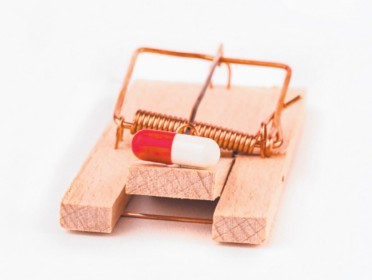
Patricia Scheetz is someone who understands too well the consequences of antibiotic resistance – an abscess on her leg and a small cut on her finger led to a week in an induced coma when all the available medication failed to work.
“I’m lucky to be alive – and to have kept my leg,” Scheetz says. “I was in hospital for three months and I had a muscle removed from my thigh – and I walked out, despite being told I wouldn’t walk again.”
The grim prediction from immunology experts is that her almost-fatalbacterial infection could become more commonplace in the future unless something is done to at least slow down the rate at which bacteria are becoming resistant to antibiotics.
And the responsibility to halt the charge of the super-immune bacteria does not just lie with governments or industry but with the average person in the street. It is our over-use and improper use of antibioticsthat is spreading the resistance – and the results could be devastating and fatal.
Back to a tragic future
Dr Janette Randall, a GP and chair of NPS MedicineWise, a government-funded independent medical advisory service, says that with the resistance growing and the superbugs no longer mostly confined to hospitals, it is not unfeasible that in the not-too-distant future even a simple scratch could kill and major surgeries could become almost impossible due to infection.
“Before antibiotics, hospitals around the world commonly dealt with patients who were seriously ill and at risk of death because of an infection, sometimes from something as simple as a scratched knee,” she says.
“Children who contracted tonsilitis while playing together in the playground often faced long hospital stays, and a bout of bacterialpneumonia came with a dire prognosis. Surgical procedures, particularly those involving the bowel, were risky and often resulted in complications or death from secondary infections.
“It’s hard to believe that in less than 100 years we could discover and lose one of the most important advances in modern medicine. But the harsh reality is we are fast approaching a situation where, by the time our children have become adults, we may have run out of effective antibiotics.”
As evidence of this, 2008 data showed that more than 1700 people die a year in our hospitals from hospital-acquired MRSA (multiresistant staphylococcus aureas) infections. The European Union has put a figure on its antibiotic-resistance death toll – a whopping 25,000 a year.
And in 2011 the World Health Organization issued an ominous warning: act now or risk losing these miracle drugs forever.
Unimpressive record
Australians are among the biggest users of antibiotics in the world. About 22 million prescriptions are dispensed every year – that’s a script for every man, woman and child in Australia each year, Randall says.
“We sit well above the Organisation for Economic Cooperation and Development average in terms of antibiotics used per capita per day. In fact, our usage is more than double that of the Scandinavian countries where antibiotic use is less socially desirable – and where health outcomes appear to be no worse than countries with high antibiotic usage,” she says.
Australians are taking antibiotics for illnesses that are either viral – so antibiotics will have zero effect in combating the illness – or for conditions that would likely resolve themselves in about the same time without taking the medication.
“Most middle ear, throat and respiratory tract infections are caused by viruses, which means that antibiotics will be of no use. And in most cases, whether viral or not, we can afford to take a wait-and-see approach,” Randall says.
“We now know it’s more important to manage the symptoms and the comfort level than try to cure an illness which will invariably run its course and resolve on its own.”
It’s up to us
Scheetz, who now walks with a limp, is unable to run and is immuno-suppressed, acquired her resistant superbug at a community level – that is, not in a hospital, where nearly all superbugs used to?be found.
Not surprisingly, Scheetz believes that getting the average Australian to have a better understanding of when and how to use antibiotics is one of the most important health messages today.
But getting this message out there requires an attitudinal shift among Australians who, recent NPS research has found, aren’t shy about asking for antibiotics.
Of those surveyed, 20 per cent said they expected their GP to prescribe antibiotics for themselves or their child for a cough or cold. When asked if they expected to be prescribed antibiotics for an ear, nose, throat or chest infection, this number jumped to almost 80 per cent, with many failing to realise these infections are also largely caused by viruses.
But Randall is not all doom and gloom. “If we change our behaviour now there is a good chance we can slow or even reverse the development of antibiotic-resistant bacteria.”
Become a resistance fighter
Through a dedicated Facebook page, Australians are being urged to commit to a few simple actions that could have a large impact on antibiotic use and antibiotic resistance. These are:
+ Don’t ask for antibiotics if you have a cold or flu, as these are caused by viruses, which antibiotics cannot treat.
+ When prescribed antibiotics for an infection, take them exactly as directed.
+ Always practise good hygiene to stop the spread of germs.
+ Spread the message to encourage others to become antibiotic resistance fighters too.
Source: bodyandSoul
 We are sharing information for knowledge. Presented by. SocialDiary.Net
We are sharing information for knowledge. Presented by. SocialDiary.Net



